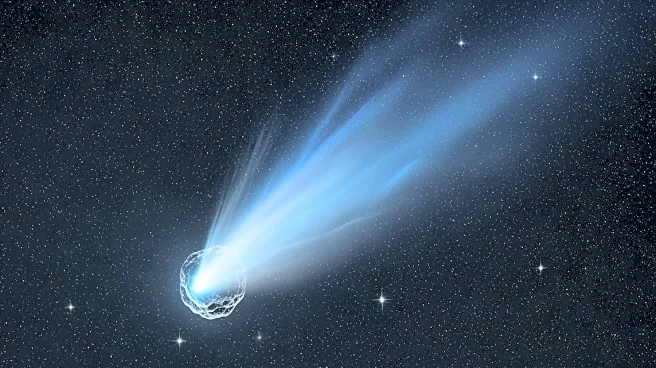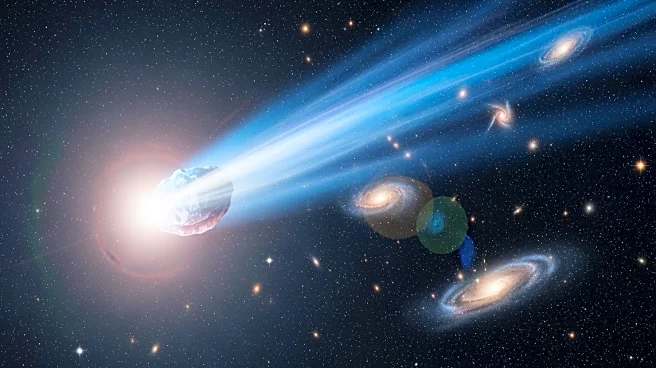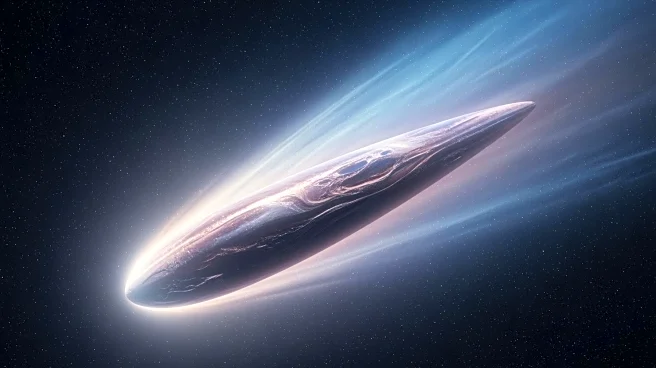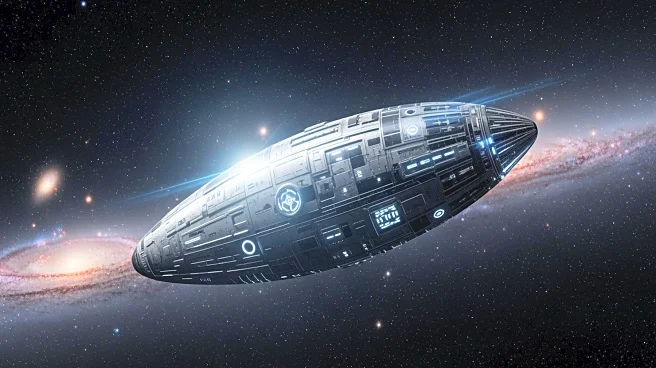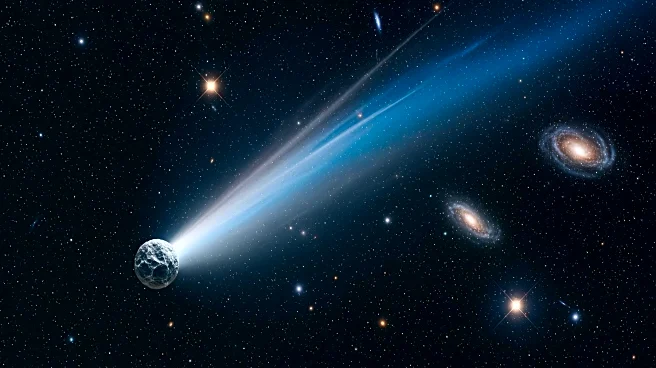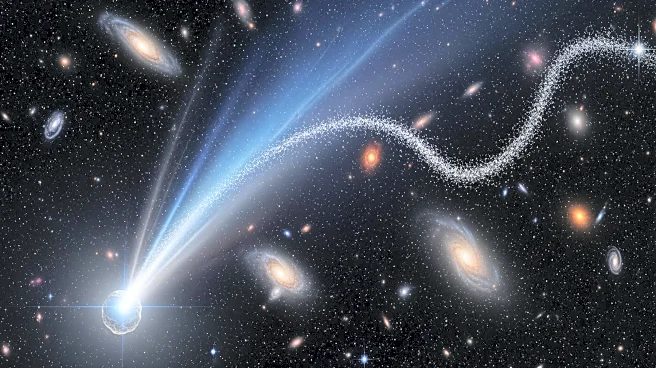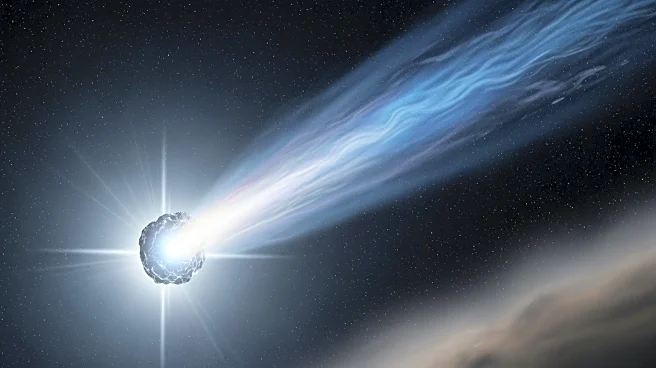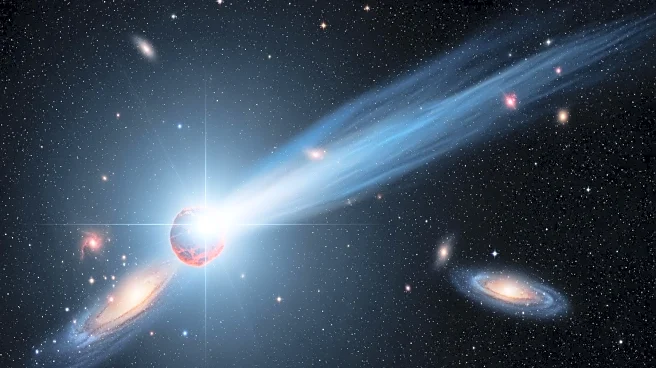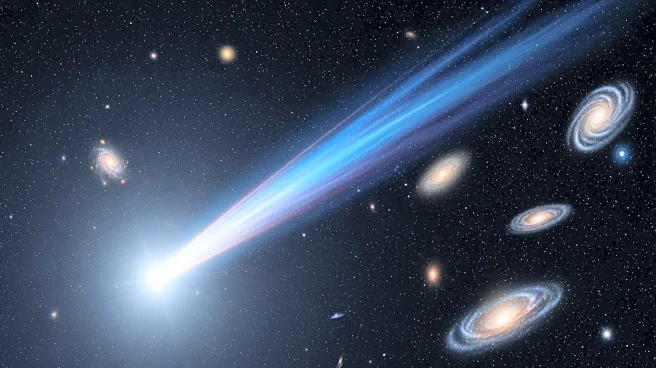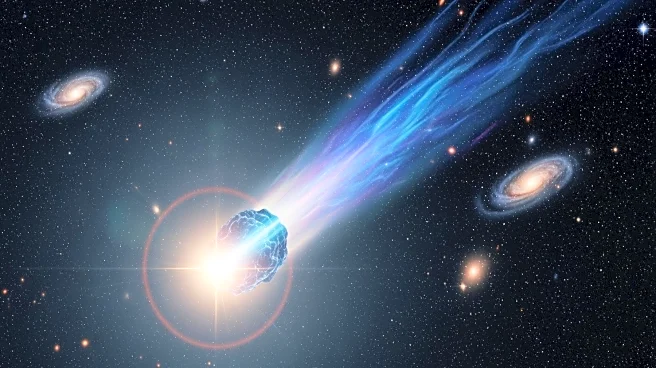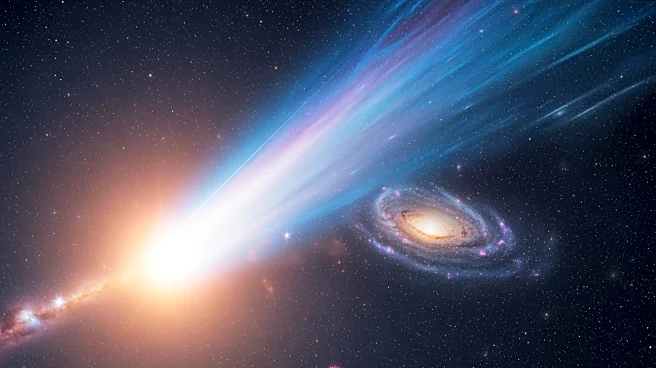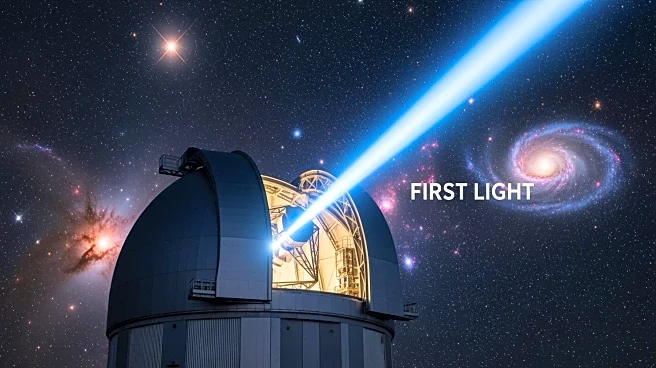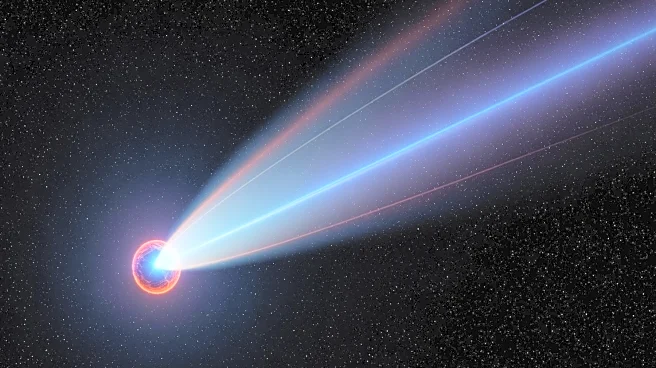What's Happening?
Astronomers have detected glowing nickel vapor in the gas surrounding the interstellar comet 3I/ATLAS, marking a significant discovery in understanding materials from beyond our solar system. Detected by the Asteroid Terrestrial-impact Last Alert System
(ATLAS) on July 1, 2025, 3I/ATLAS is the third confirmed interstellar object. Unlike its predecessors, this comet was observed early in its journey, providing a unique opportunity to study its chemical composition as it approaches the sun. The presence of nickel vapor at such a distance from the sun, where temperatures are too cold for metals to vaporize, suggests unusual chemical processes at play. Observations from the Very Large Telescope in Chile have revealed that the comet's coma contains more carbon dioxide than water, a rare composition compared to most solar system comets.
Why It's Important?
The discovery of nickel vapor in 3I/ATLAS provides valuable insights into the chemical makeup of interstellar objects, which are considered cosmic time capsules. These objects carry information from their star systems of origin, potentially billions of years old. Understanding their composition can help scientists learn about the building blocks of planetary systems across the galaxy. The findings challenge existing theories about comet chemistry and suggest that nickel may be released through low-temperature processes, possibly involving organic compounds. This research could lead to a better understanding of the diversity and complexity of materials that form planets around different stars.
What's Next?
As 3I/ATLAS continues its journey toward the sun, scientists will gather more data on its chemical composition. The comet's closest approach to the sun, or perihelion, is expected on October 29, 2025. Researchers anticipate further increases in activity and the emergence of new chemical species as temperatures rise. The ongoing observations will contribute to a more comprehensive understanding of interstellar comets and their role in the broader context of astrophysics.
